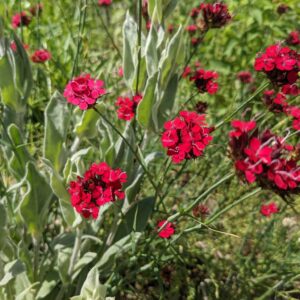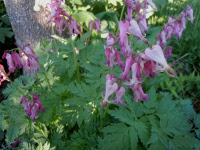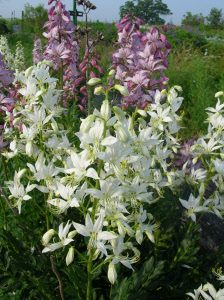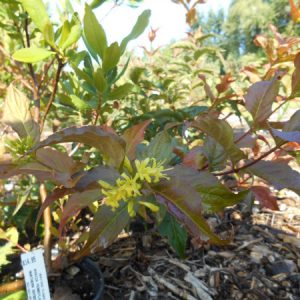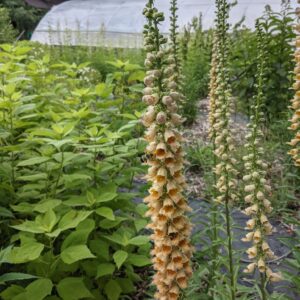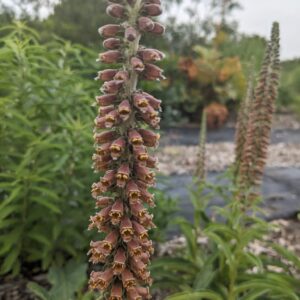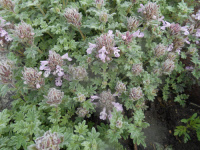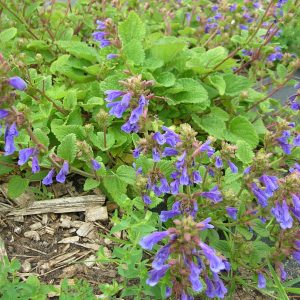Plants for Butterflies and Other Pollinators
Showing 65–72 of 223 results
-
Dianthus cruentus Blood pink Z 5-9
Small but eye-catching carmine flowers held high on a leafless stem above basal foliage. Blooms in late spring-early summer
Small but eye-catching carmine flowers held high on a leafless stem above basal foliage. Blooms in late spring-early summer
Size: 2-3’ x 6-9”
Care: sun in moist well-drained soil
Native: Balkans
Wildlife Value: Attracts bees & butterfliesFirst described in Spic. Fl. Rumel. 1: 186 1843.
-
Dicentra eximia syn Lamprocapnos , Fringed bleeding heart Z 4-8
May to October, dangling rose pink heart-shaped panicles
OUT OF STOCK
May to October dangling rose pink heart-shaped panicles among fern-like, grey-green foliage. They appear delicate but are not.
Size: 8” x 8”
Care: Part shade, moist to moist well-drained soil
Native: Mountains from New York to Georgia
Wildlife Value: Nectar source for hummingbirds & White swallowtail butterfly.Dicentra derived from Greek dis meaning two and kentros meaning spurs. Introduced to gardens by Quaker planthunter and nurseryman John Bartram (1699-1777) in mid-1700’s. Recommended by Gertrude Jekyll, mother of mixed perennial borders, in 1908.
**LISTED AS OUT OF STOCK BECAUSE WE DO NOT SHIP THIS ITEM. IT IS AVAILABLE FOR PURCHASE AT OUR RETAIL LOCATION.
-
Dictamnus fraxinella syn. D. alba Gas plant, Burning bush Z 3-9
Magestic white or pink spikes of flowers in early summer, glossy, lemon-scented leaves
Magestic white or pink spikes of flowers in early summer, glossy, lemon scented leaves.
OUT OF STOCK
Size: 2-3' x 2' slow growing
Care: full sun to part shade in well-drained soil.
Native: Europe
Wildlife Value: Host for Giant Swallowtail caterpillars. Rabbit & deer resistant.
Awards: England’s Royal Horticultural Society Award of Merit.Dictamnus is from the mountain Dicte, located in Crete. Popular Elizabethan cottage garden plant since the late 1500’s. English herbalist John Gerard (1545-1612) called it “gallant.” Grown in the Eichstätt Garden, the garden of Johann Konrad von Gemmingen, prince bishop of Eichstätt in Bavaria, c. 1600. Grown by Jefferson at Monticello in the “center of the NW shrub circle,”1807. The roots used medicinally “resisting purification and poison.” Gardeners’ Dictionary, 1768. Once established very long-lived plant, “known to stand on the same place for fifty years still bearing healthy blooms.” The Garden Feb 19, 1876.
-
Diervilla lonicera Northern bush honeysuckle Z 3-7
Lemon yellow flowers on this short shrub June to August. In fall its foliage turns dark red for the final fireworks’ display. Great shrub for tough, dry shady areas.
Lemon yellow flowers on this short shrub June to August. In fall its foliage turns dark red for the final fireworks’ display.
Size: 3’ x 3’ spreading
Care: sun to part shade in well-drained soil, drought tolerant
Native: Eastern half of US & Canada, Wisconsin native.
Wildlife Value: nectar source for Bumblebees. Birds make nests from the branches and eat the fruitsUsed medicinally by numerous Native Americans – Algonquin, Chippewa, Cree, Iroquois, Menominee, Meskwaki, Ojibwa and Potawatomi. Used as remedy for sore eyes, diuretic, “old men who cannot retain urine,” constipation, stomach pain, increase breast milk, to “spoiled babies with adulterous mother,” STD’s and vertigo. Dr. N. Dierville, a surgeon, carried this to France from Canada (then Acadia) in 1699. Botanist to France’s king, Louis XIV, Joseph Pitton de Tournefort (1656-1708) named this to honor Dierville
**LISTED AS OUT OF STOCK BECAUSE WE DO NOT SHIP THIS ITEM. IT IS AVAILABLE FOR PURCHASE AT OUR RETAIL LOCATION.
-
Digitalis ferruguina Rusty foxglove Z 4-7
Mottled rusty bells with brown speckled throats & hairy lips clothe the spikes in mid-summer. One of internationally known garden designer Piet Oudolf’s 100 “MUST HAVE” plants, Gardens Illustrated 94 (2013)
Mottled rusty bells with brown speckled throats & hairy lips clothe the spikes in mid-summer. One of internationally known garden designer Piet Oudolf’s 100 “MUST HAVE” plants, Gardens Illustrated 94 (2013)
Size: 4-5' x 18"
Care: sun to part shade in moist well-drained soil.
Native: Southern Europe and Balkans
Awards: England’s Royal Horticultural Society Award of Merit. Elisabeth Carey Miller Botanical Garden Great Plant Pick.The word ‘fox’ is said to be a corruption of ‘folk,’ meaning the ‘little folk’ or fairies. Foxgloves reputedly had the power to ward off witches and return children kidnapped by fairies Ferruginea means rust-colored from ferric describing metal containing iron. This species in garden cultivation since at least the 1590’s.
-
Digitalis parviflora Chocolate foxglove Z 3-9
Spikes densely encircled with small, red-brown bells for weeks in summer, prune back after flowering to encourage reflowering.
OUT OF STOCK
Spikes densely encircled with small, red-brown bells for weeks in summer, prune back after flowering to encourage reflowering.
Size: 24- 60” x 12”
Care: sun to part shade in moist well-drained to well-drained soil
Native: Picos de Europa Mountains of Northern Spain
Wildlife Value: attracts bees and butterflies for its pollen and nectar, deer and rabbit resistant.
Awards: Royal Horticultural Society Award of Garden MeritGrown by Tradescant the Elder, 1634.
-
Dracocephalum botryoides Dragonhead Z 4-7
Fuzzy, grey, deeply divided foliage with baby pink blossoms in May-June
Fuzzy, grey, deeply divided foliage with baby pink blossoms in May-June
Size: 5” x 18”
Care: sun to part shade in well-drained soil
Native: Caucasus on rocky, stony slopes, and screes where it is now endangered.
Wildlife Value: provides nectar and pollen for bees1st described in 1812. Dracocephalum means “dragonhead,” referring the shape of the flower.
-
Dracocephalum grandiflorum Bigflower dragonhead Z 3-8
Intense blue hood-shaped flowers in summer
OUT OF STOCK
Intense blue hood-shaped flowers in summer
Size: 6”x 8”
Care: full sun in moist, well-drained soil
Native: SiberiaDracocephalum is Greek meaning “dragonhead” referring to the shape of the flower. Introduced to gardens by 1759. Grown in American gardens since 1850’s. William Robinson, father of the mixed perennial border, described this as “very dwarf” having “large clusters of intensely blue flowers.” Sanders considered it an “excellent plant for a sunny rockery.” 1913.

